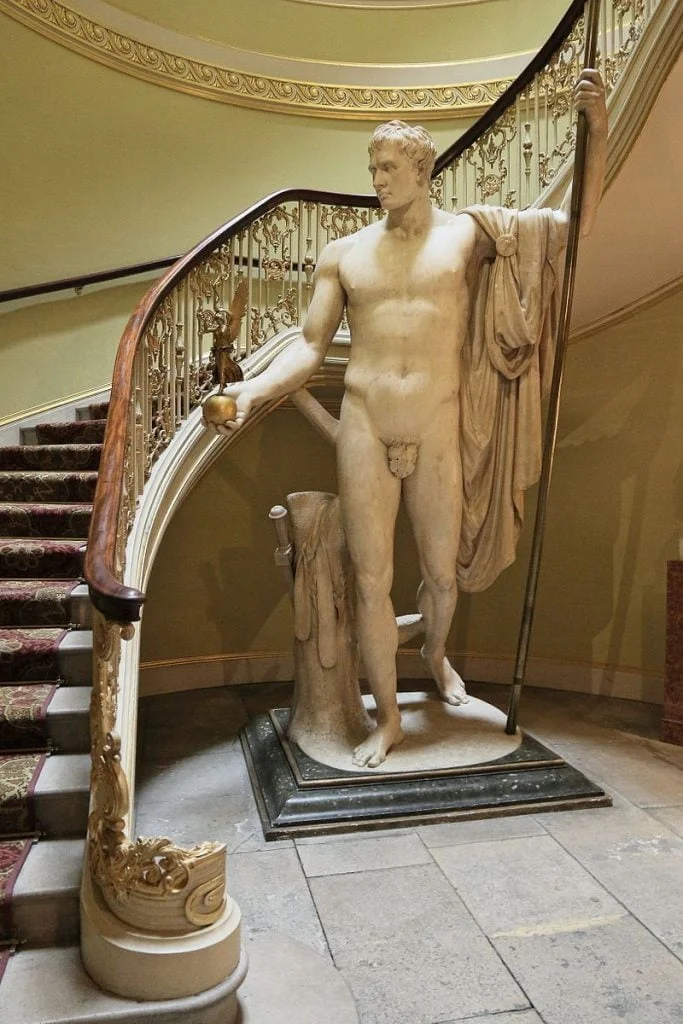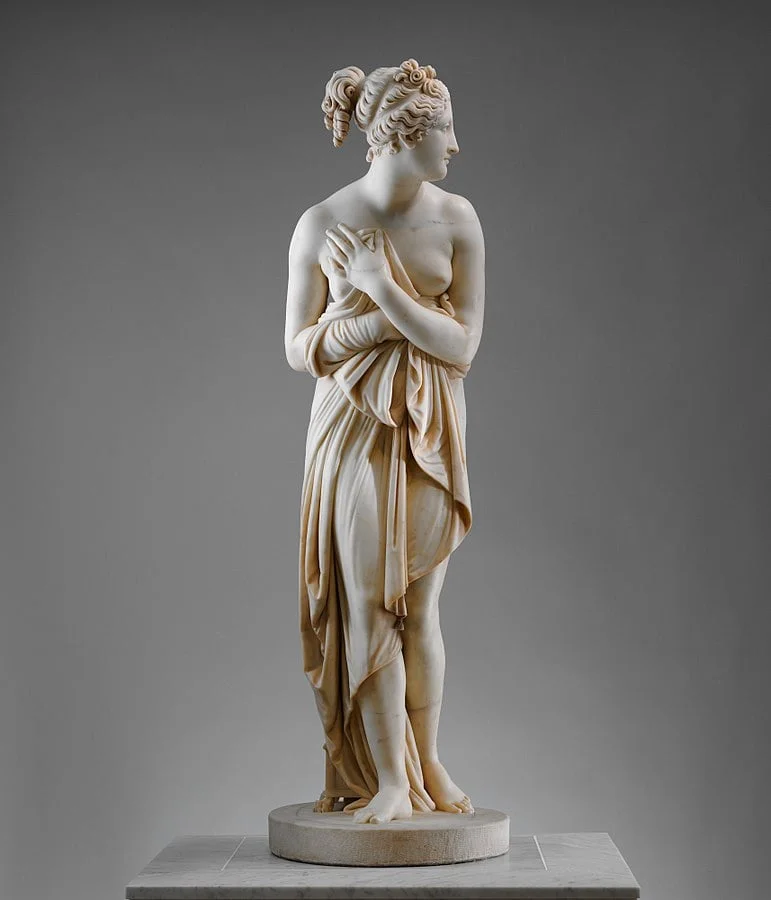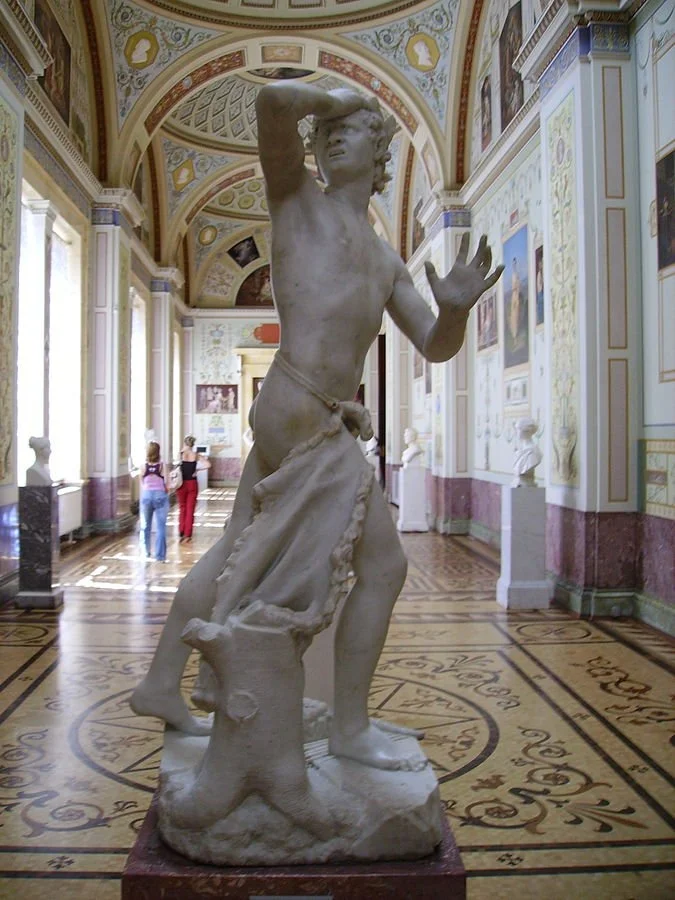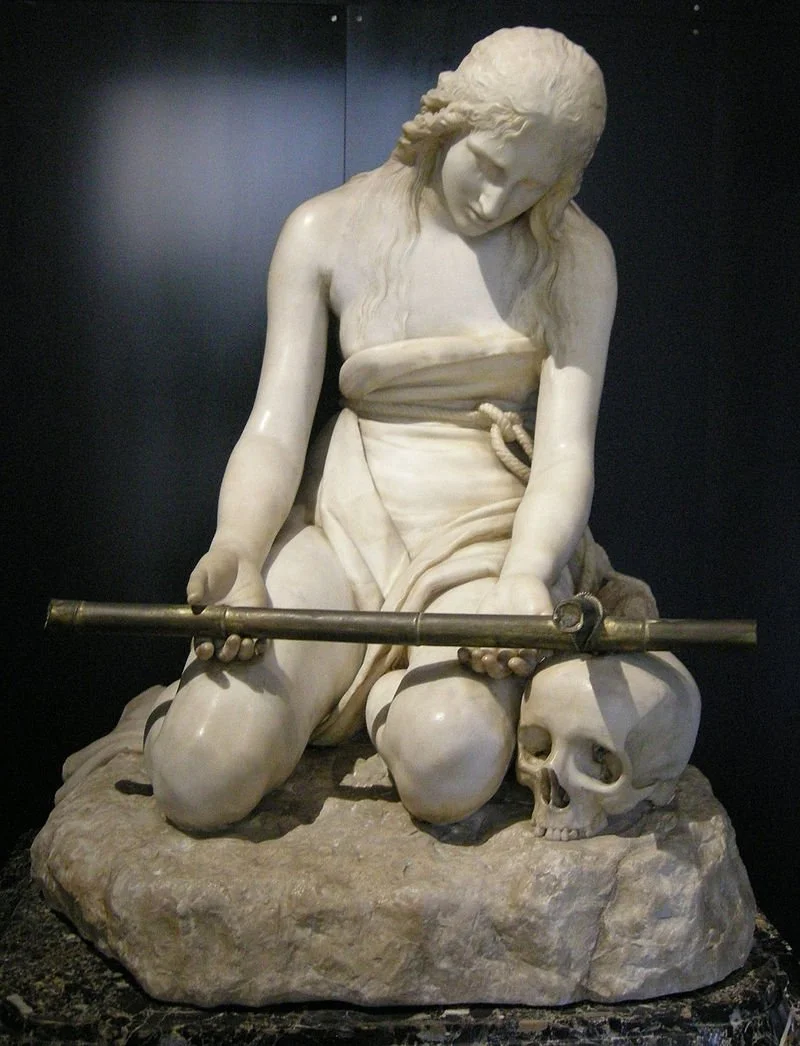This Italian Neoclassical artist can easily be described as one of the most renowned sculptors of this art movement. By the end of the 18th century, he was the most sought-after artist in Europe and he created sculptures for some of the most famous people in history.
His sculptures have been described as being void of the exaggerated dramatic effects used by Baroque artists, yet lively enough to be distinctively different from sculptures created in antiquity.
Let’s take a closer look at some of the most famous Antonio Canova sculptures, amazing works which both revived art from antiquity and made the artist one of the most influential sculptors in history!
1. Psyche Revived by Cupid’s Kiss
- Date created: 1787-1793
- Dimensions: 155 × 168 centimeters (61 × 66 inches)
- Location: Louvre Museum, Paris, France
Psyche Revived by Cupid’s Kiss was commissioned in 1787 by a Welsh politician and art collector named Colonel John Campbell. This marble sculpture pretty much defines the career of Canova as he is considered one of the most famous Neoclassical artists but still managed to put some emotion into his works.
It depicts the god Cupid as he brings the lifeless Psyche back to life with a kiss. It’s considered to be one of the most famous Anotonio Canova sculptures and an ultimate masterpiece of the Neoclassical art movement.

2. The Three Graces
- Date created: 1814-1817
- Dimensions: 173 x 97.2 x 57 centimeters (68 x 38 x 22 inches)
- Location: Hermitage Museum, Saint Petersburg, Russia
The Three Graces is a marble sculpture that depicts the 3 daughters of the god Zeus, also known as the “3 charites.” They are the goddesses of charm, beauty, human creativity, fertility, goodwill, and nature.
Engravings on the statue identify them as Euphrosyne, Aglaea, and Thalia. The original version of the sculpture is located in Saint Petersburg in Russia. There’s also another version which is jointly owned by the Victoria & Albert Museum in London and the Scottish National Gallery in Edinburgh.

3. Napoleon as Mars the Peacemaker
- Date created: 1802-1806
- Dimensions: 345 centimeters (136 inches)
- Location: Apsley House, London, United Kingdom
Napoleon as Mars the Peacemaker is a colossal nude statue of Napoleon Bonaparte, who commissioned the statue of himself depicted as the god Mars. Unfortunately, when Napoleon finally laid eyes on it in April of the year 1811, he rejected it, calling it “too athletic.”
He also banned the public from seeing it but it somehow ended up in the Louvre Museum in Paris anyway. It was finally purchased by the British Government in 1816 which offered it to the Duke of Wellington. It still decorates the Duke’s private residence, called the Apsley House in London, until today.

4. Venus Victrix
- Date created: 1805-1808
- Dimensions: 160 x 192 centimeters (63 x 75 inches)
- Location: Galleria Borghese, Rome, Italy

Venus Victrix is another statue depicting a real person as a god. This sculpture depicts the semi-naked Pauline Bonaparte, an imperial French princess, as she is reclining on a couch.
It was commissioned by her husband Camillo Borghese to commemorate their marriage. Canova clearly drew inspiration from the ancient statues of “Hermaphroditus” which was mostly depicted in a similar reclining position.

5. Venus Italica
- Date created: 1822-1823
- Dimensions: 175.3 centimeters (69 inches)
- Location: Metropolitan Museum of Art, New York City, United States
The Venus Italica is a marble sculpture that is a copy of an original created by Canova in 1804. This sculpture was commissioned by Ludovico I, King of Etruria, to replace the Venus de Medici, an ancient statue dating back to the 1st century B.C.
Canova’s original version is on display at the Pitti Palace in Florence, while the copy was originally purchased to decorate the Londonderry House in London, and eventually moved to the Metropolitan Museum of Art in New York City in 1962.

6. Theseus and the Minotaur
- Date created: 1781-1782
- Dimensions: 45.4 × 158.7 × 91.4 centimeters (18 x 62 x 36 inches)
- Location: Victoria and Albert Museum, London, United Kingdom
Theseus and the Minotaur was the first statue that Canova created after he moved to Rome. It’s basically the sculpture that turned him into one of the most renowned artists in the city after his move from Venice.
It’s one of the most famous Antonio Canova sculptures as the people in Rome who saw this remarkable sculpture had a hard time believing that it was created by a contemporary artist and initially assumed that it was a copy of an ancient Greek work.

7. Mars and Venus
- Date created: 1815-1819
- Dimensions: 208 x 137 x 65.5 centimeters (82 x 54 x 25 inches)
- Location: Buckingham Palace, London, United Kingdom
Mars and Venus is another sculpture depicting the Roman gods “Mars and Venus” as they embrace each other. It’s supposed to represent an allegory of war and peace after England defeated Napoleon at the Battle of Waterloo in 1815.
It was commissioned in the same year by the Prince Regent to decorate the Carlton House after Canova visited London. It’s now part of the Royal Collection and is located at the end of the marble hall at Buckingham Palace in London.

8. Orpheus
- Date created: 1777
- Dimensions: 140 centimeters (55 inches)
- Location: Hermitage Museum, Saint Petersburg, Russia
Orpheus is one of a pair of statues depicting Orpheus and Eurydice. According to the ancient legend, Orpheus’ wife Eurydice dies from a snake bite. He manages to bring her back from the dead on one condition, which is that he can not look at her. He can’t resist, though, and she slips away from him forever, which is the moment this statue depicts.
It was the first-ever commission of the 16 or 17-year-old Antonio Canova. This statue, which clearly displays extreme emotions, still shows signs that the young sculptor was influenced by the Baroque art movement.

9. Penitent Magdalene
- Date created: 1793-1796
- Dimensions: 90 centimeters (35 inches)
- Location: Palazzo Doria-Tursi, Genoa, Italy
The Penitent Magdalene is one of two versions of a sculpture depicting Mary Magdalene, a woman who followed Jesus Christ and was present at his crucifixion according to the gospels.
He created the original version, which is now located in a Palazzo in Genua which is part of the Strada Nuova Museums, in the 1790s. The second version was created between 1808 and 1809 and can now be found at the Hermitage Museum in Saint Petersburg in Russia.

10. Daedalus and Icarus
- Date created: 1777-1779
- Dimensions: 200 x 95 x 97 centimeters (78 x 37 x 39 inches)
- Location: Museo Correr, Venice, Italy
Daedalus and Icarus is a sculpture often described as one of the most famous Antonio Canova sculptures from his Venetian Period. It was also one of the early works that allowed him to grow his reputation in Venice as a young sculptor in his early twenties.
One of the most remarkable facts about this sculpture is that the depiction of the aging Daedalus presumably represents Canova’s grandfather, the man who taught him to sculpt from a very young age.

